Abstract
1. L-glutamic acid reversibly inhibits the contractions of isolated circular muscle preparations from different body regions of the sea anemone Actinia equina to electrical stimulation.
2. L-glutamic acid does not cause inhibition of contraction by conversion to ammonia or γ-amino-butyric acid, but appears to act on a glutamate receptor.
3. It is postulated that in Actinia equina there is a receptor for glutamic acid whose structural requirements for activation are met by comparatively few analogues of glutamic acid. Of thirty-four analogues tested, only seven were active, most were less active, and only homocysteic acid had a greater activity than L-glutamic acid.
4. Glutamic acid does not depress conduction of contraction in circular muscle preparations.
5. The inhibition produced by L-glutamic acid does not appear to be conducted from one part of a preparation to another.
6. Glutamic acid occurs in high concentrations in supra oral sphincter preparations of Actinia equina.
7. Glutamic acid is released into sea water from sphincter preparations at rest and the amount released is increased by electrical stimulation of the preparation. However, many other amino acids are released at rest and following electrical stimulation, so that it is difficult to suggest that glutamic acid may be involved as a neurotransmitter in the sea anemone.
Full text
PDF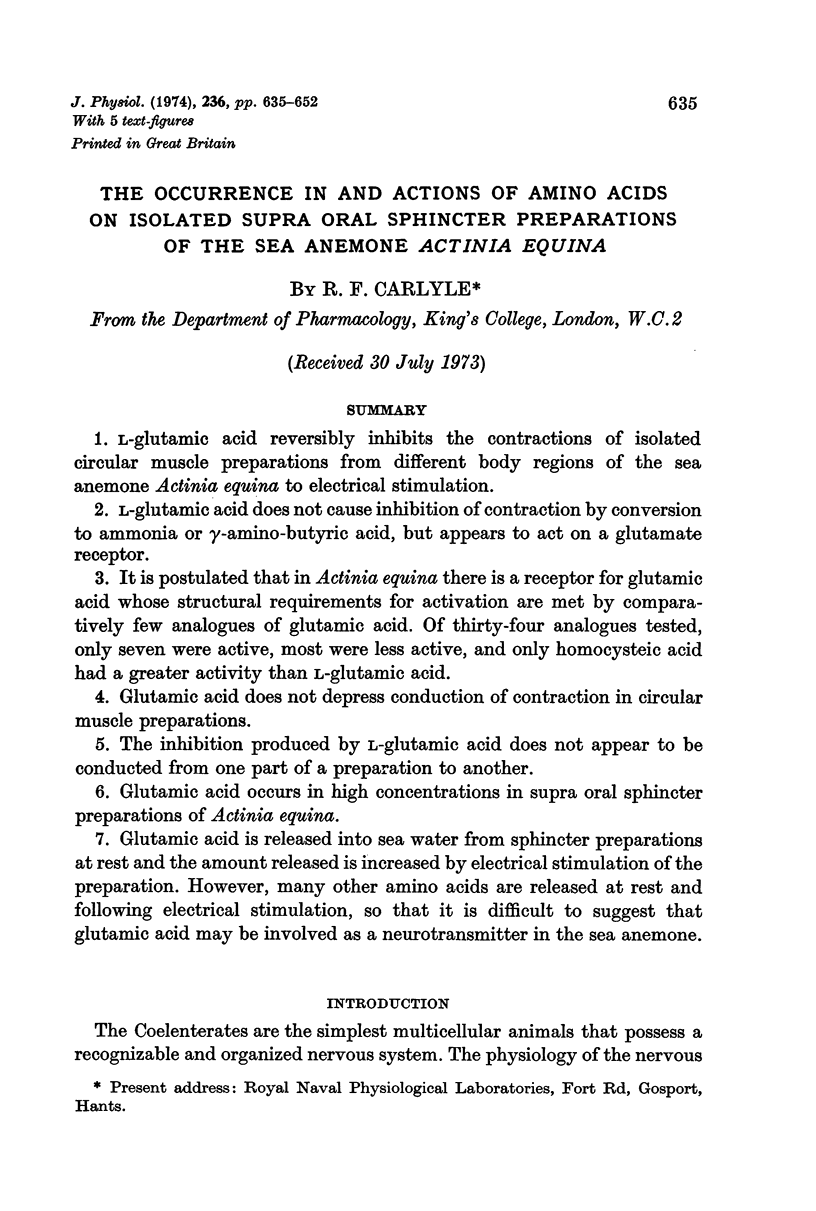
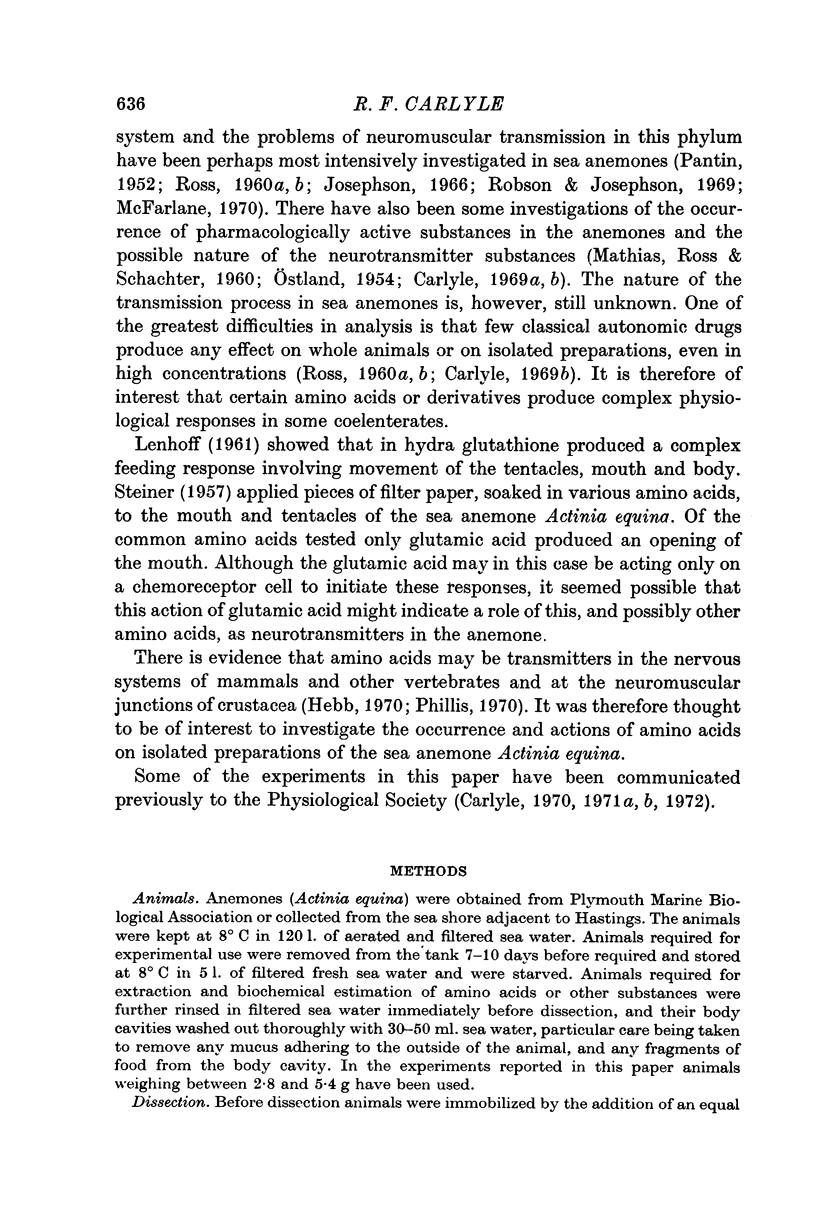

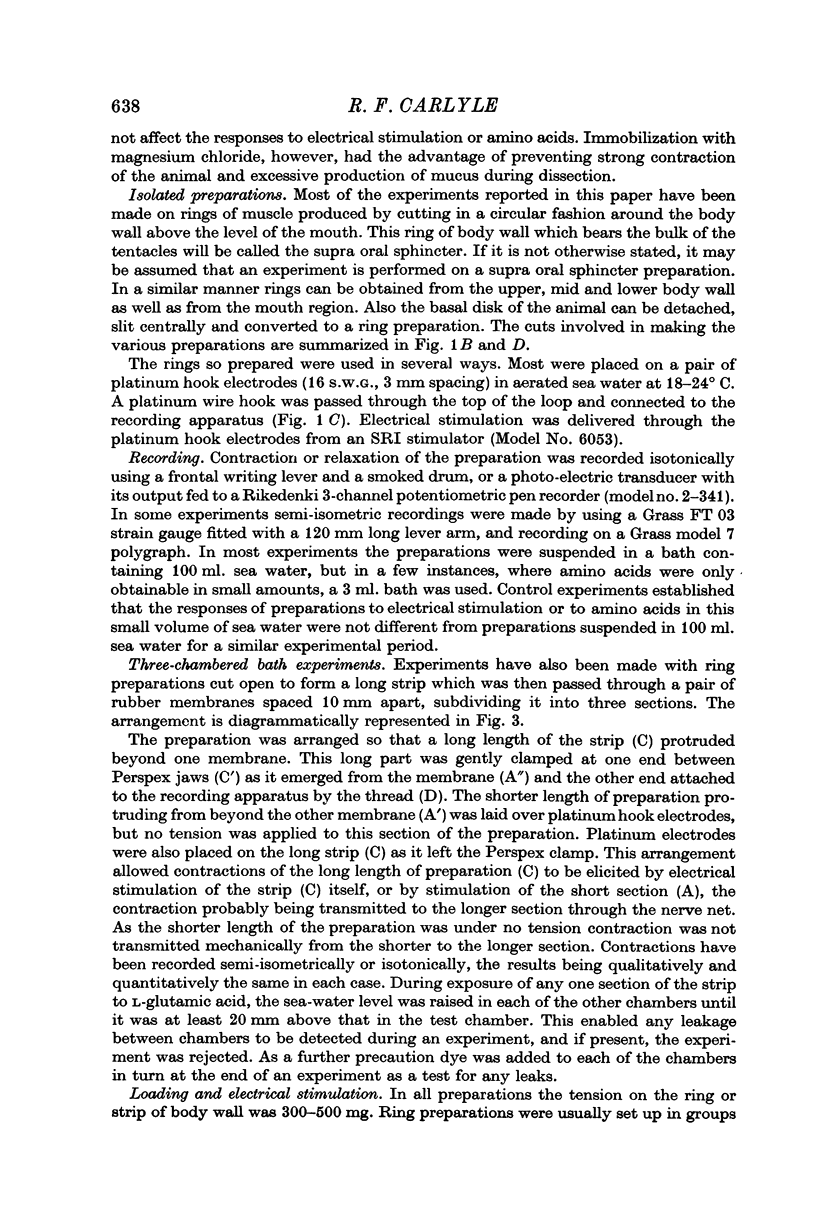
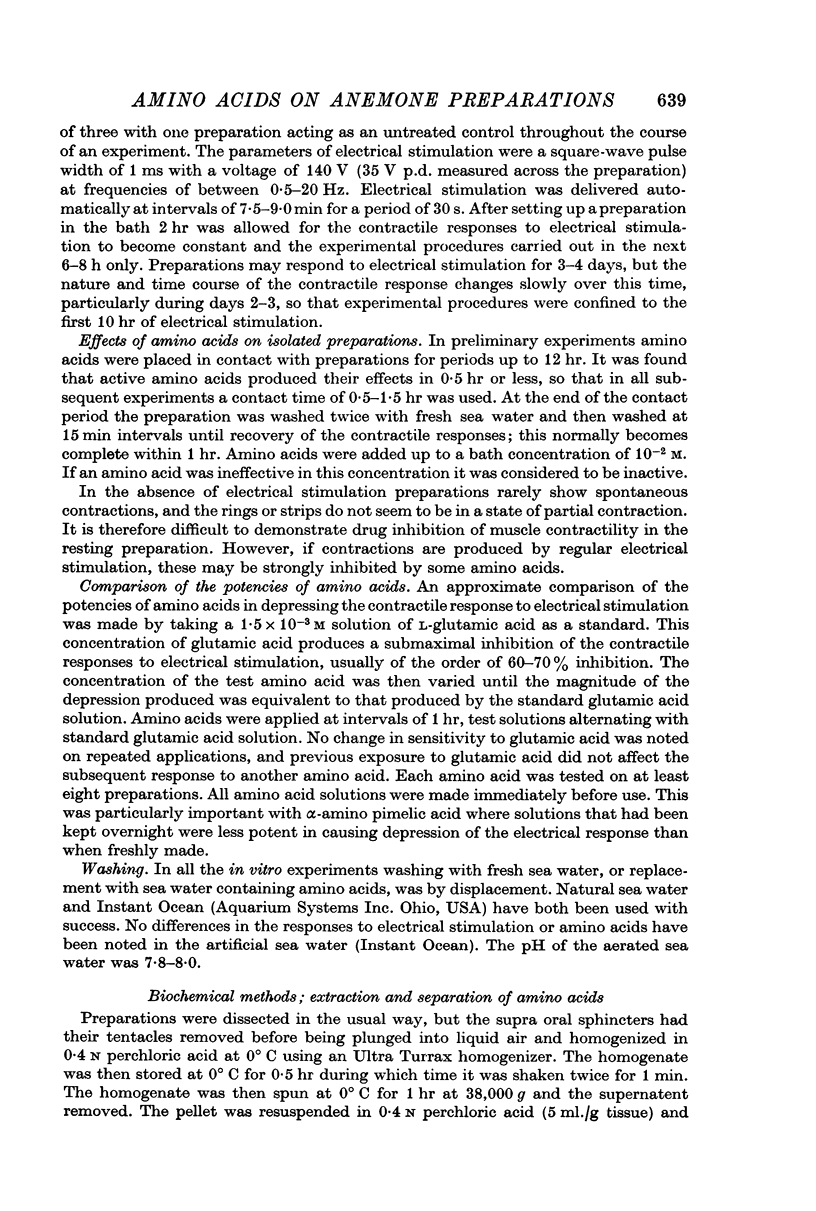
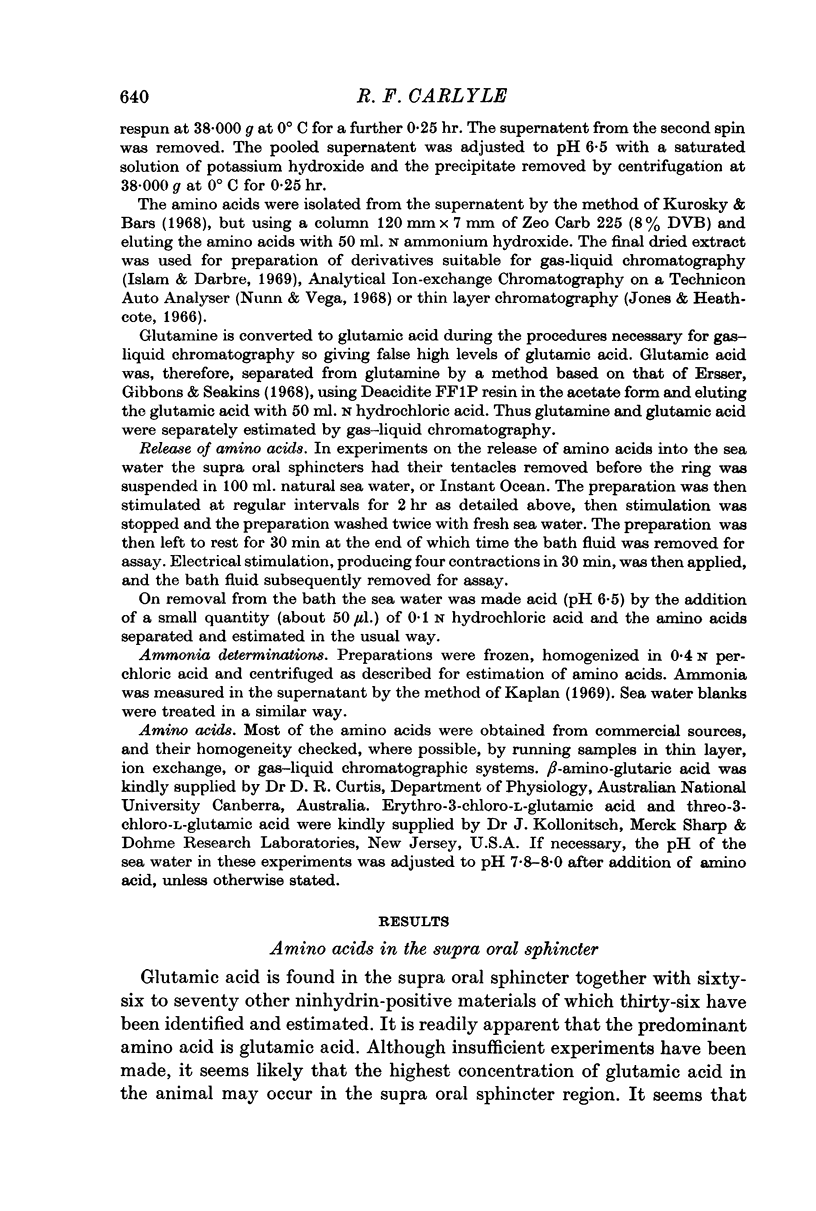
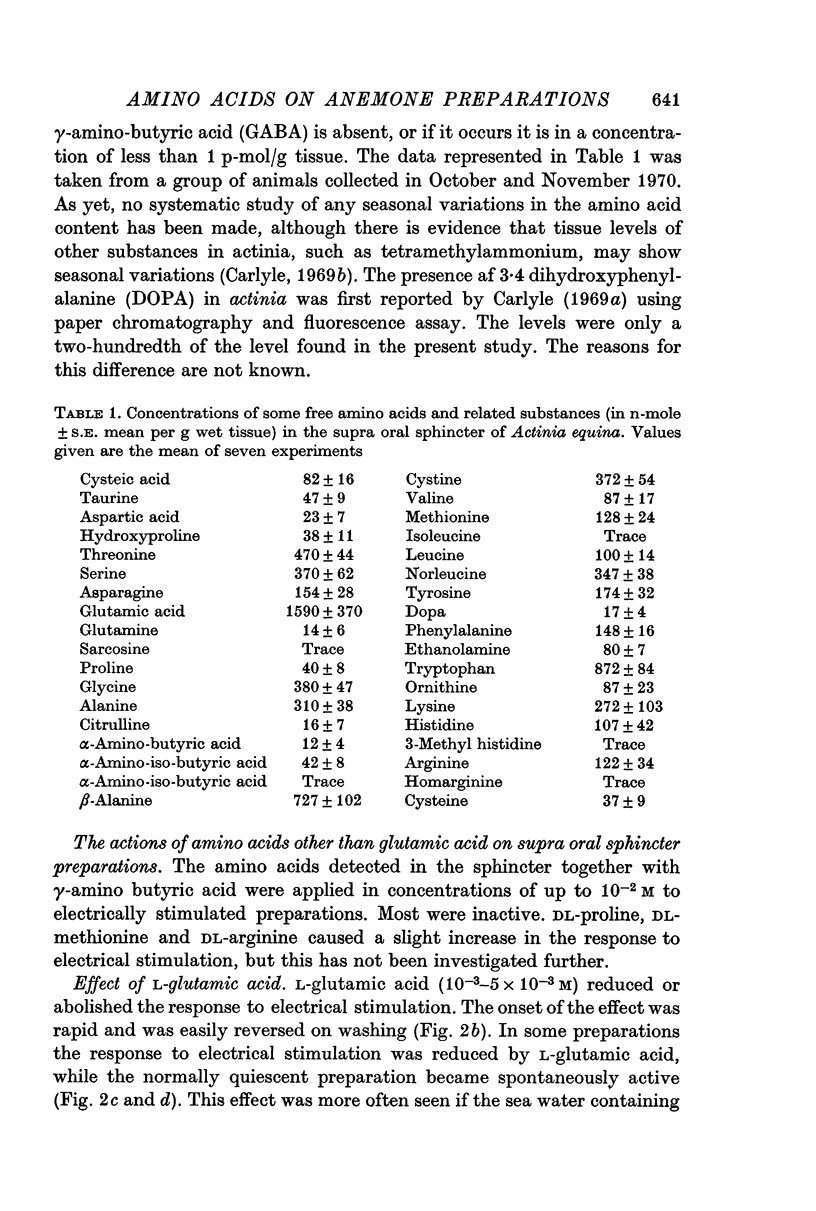
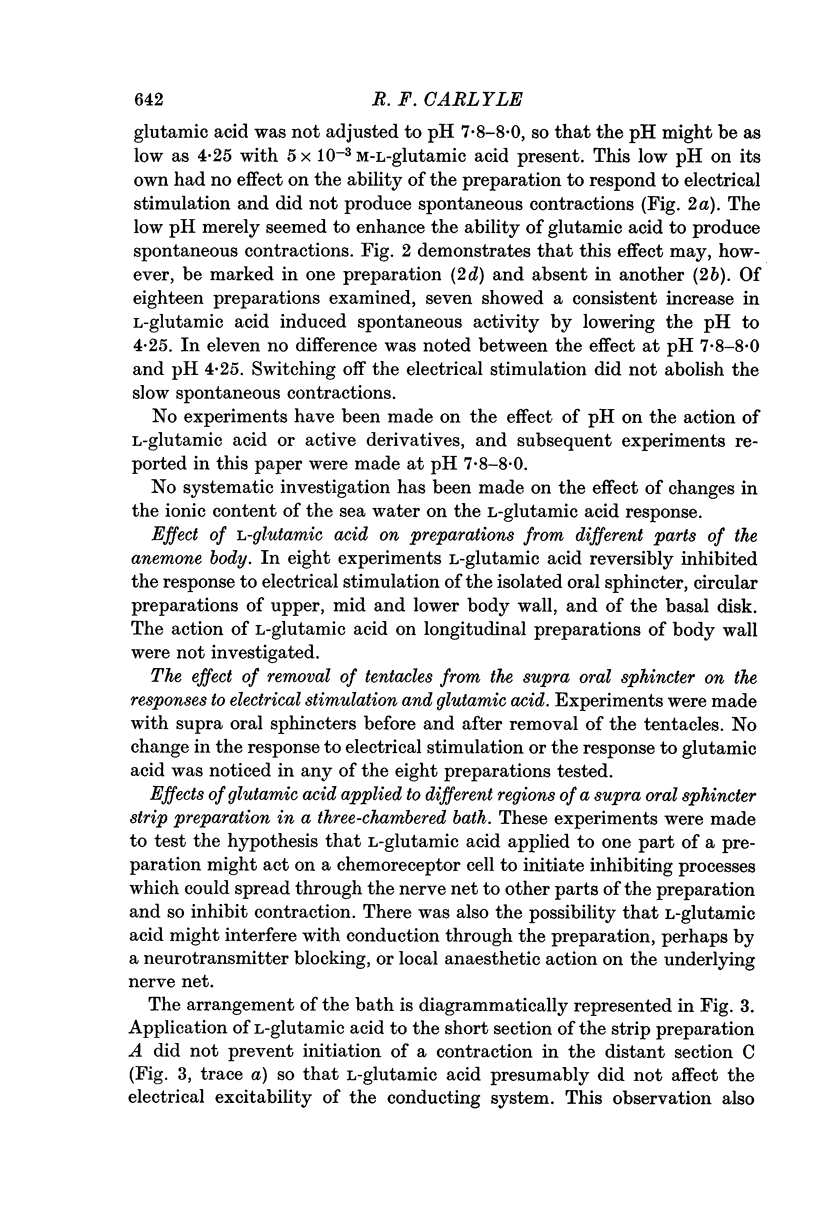
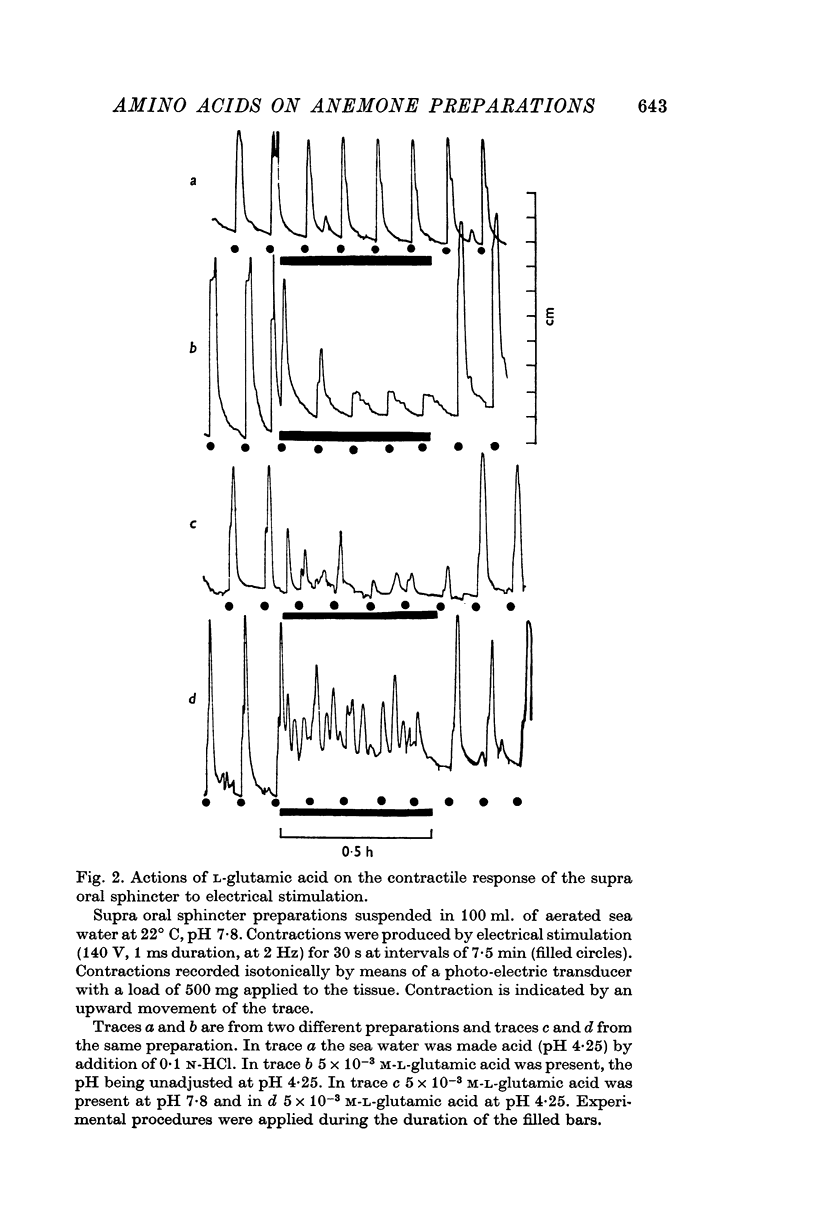
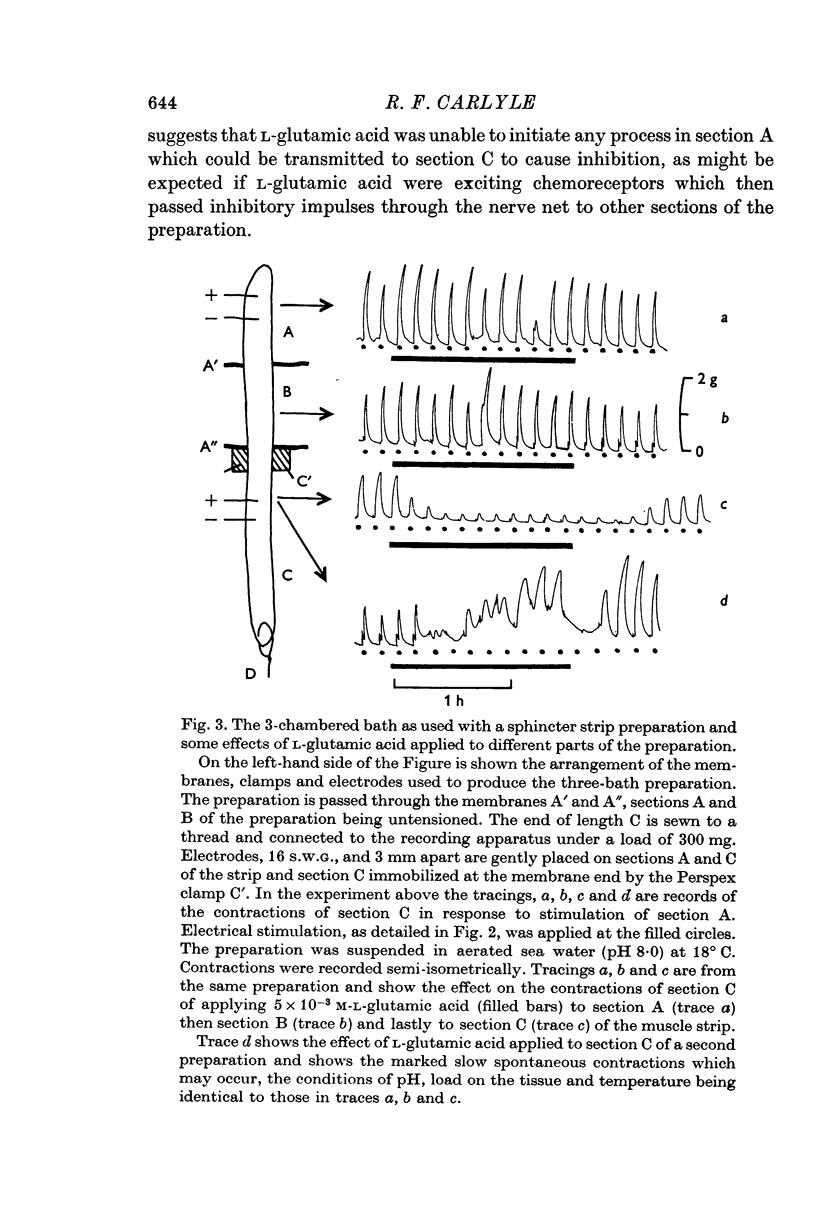
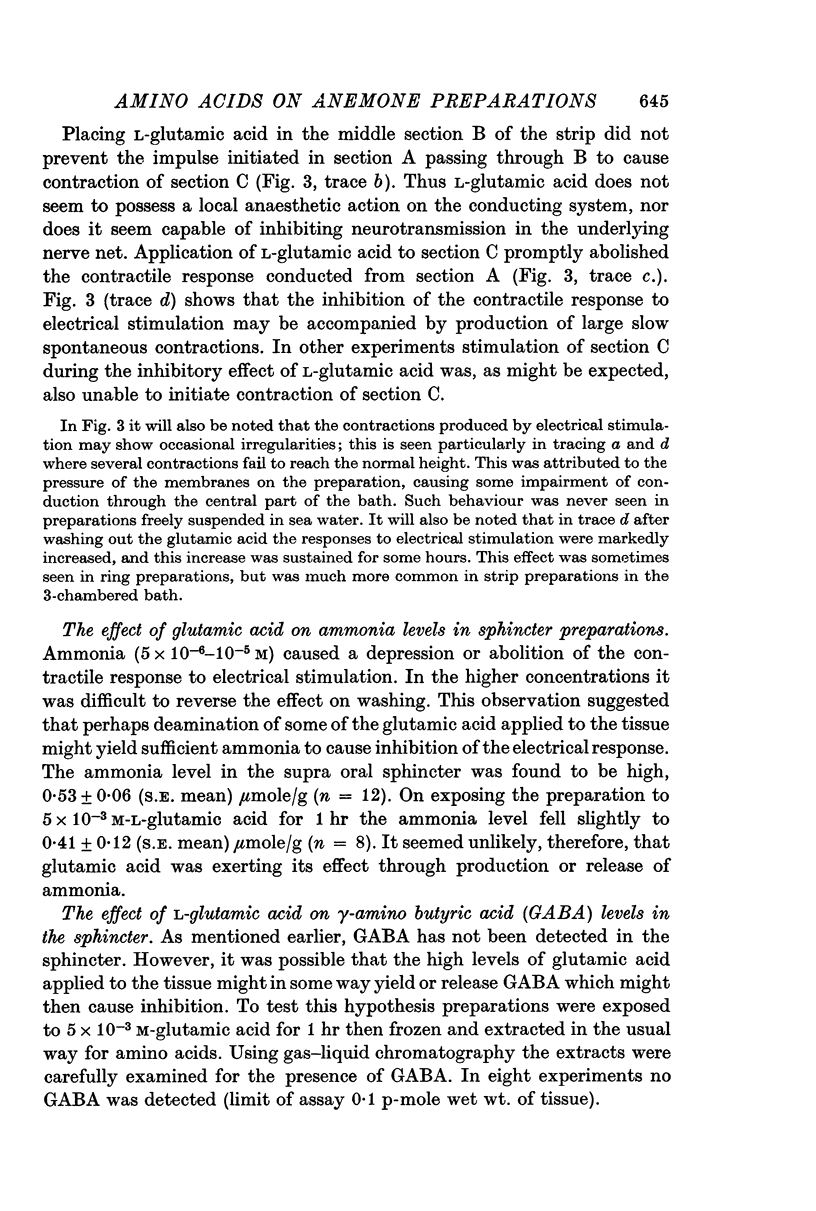
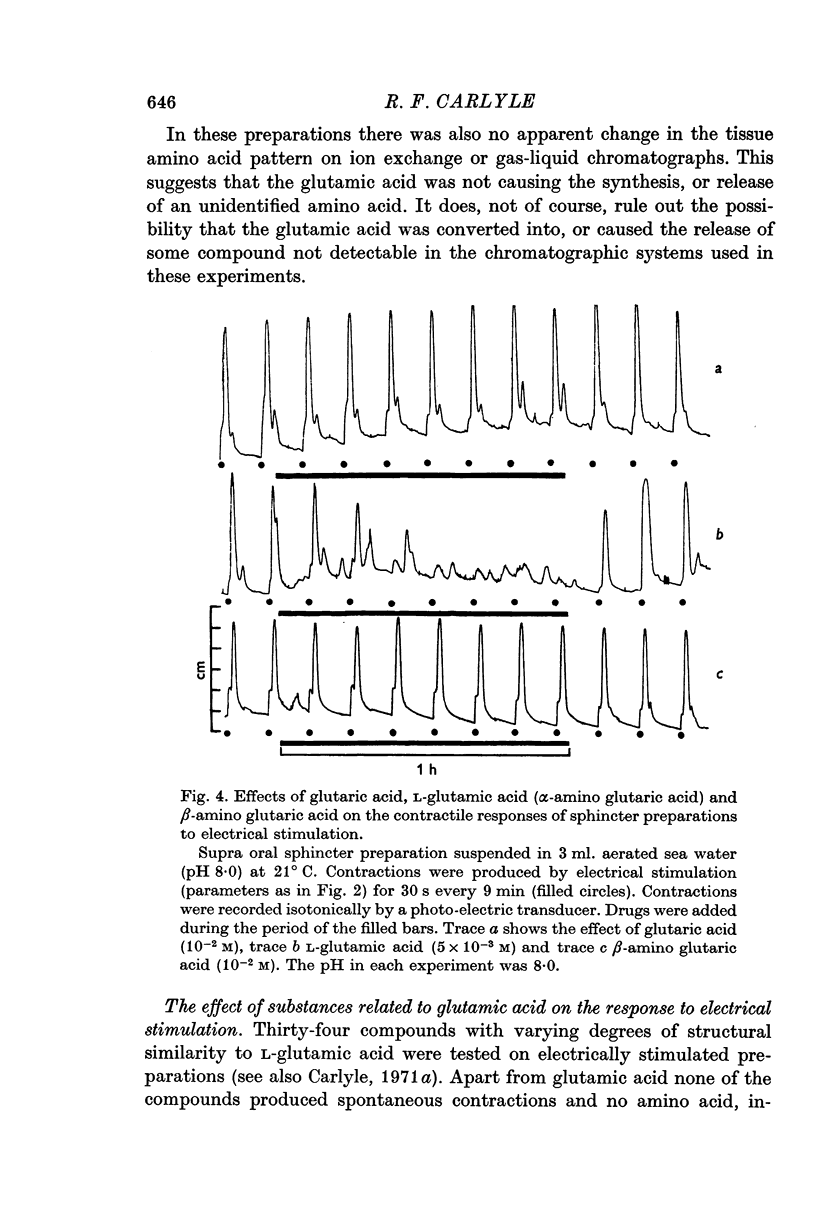
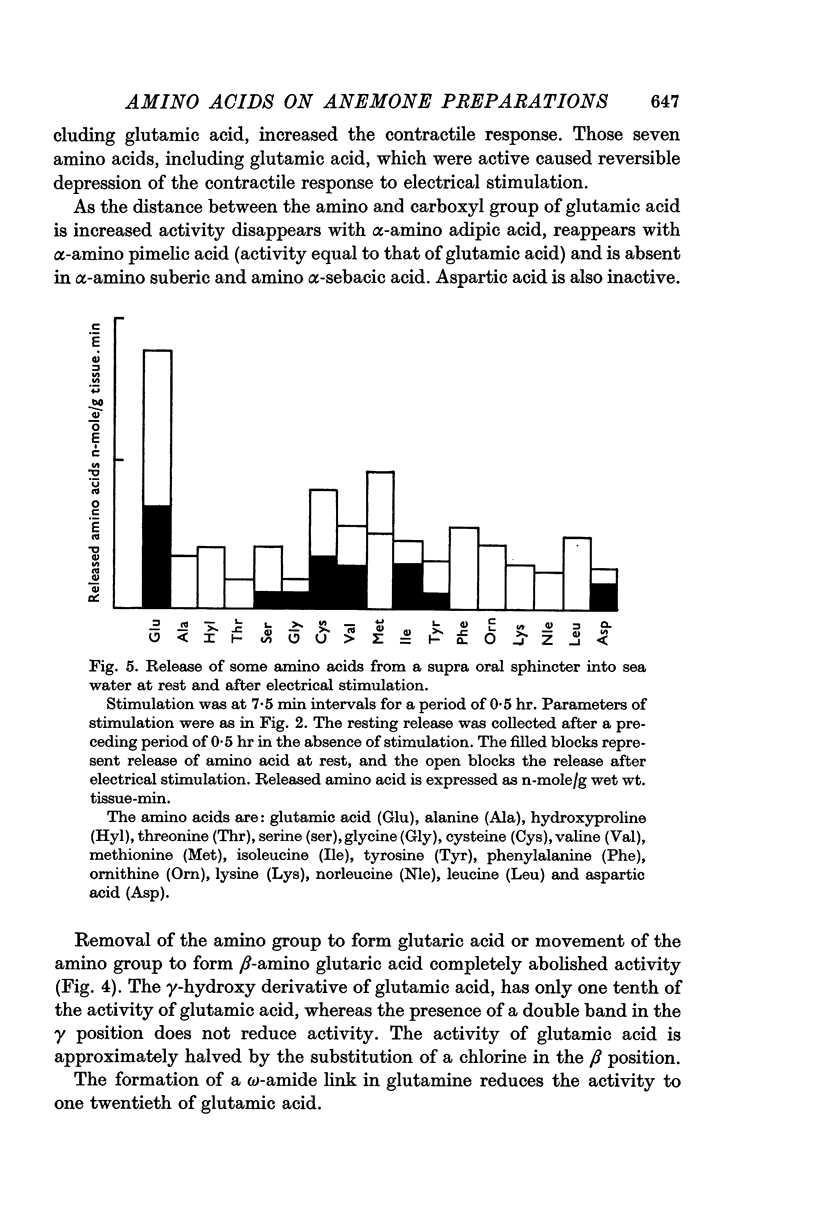
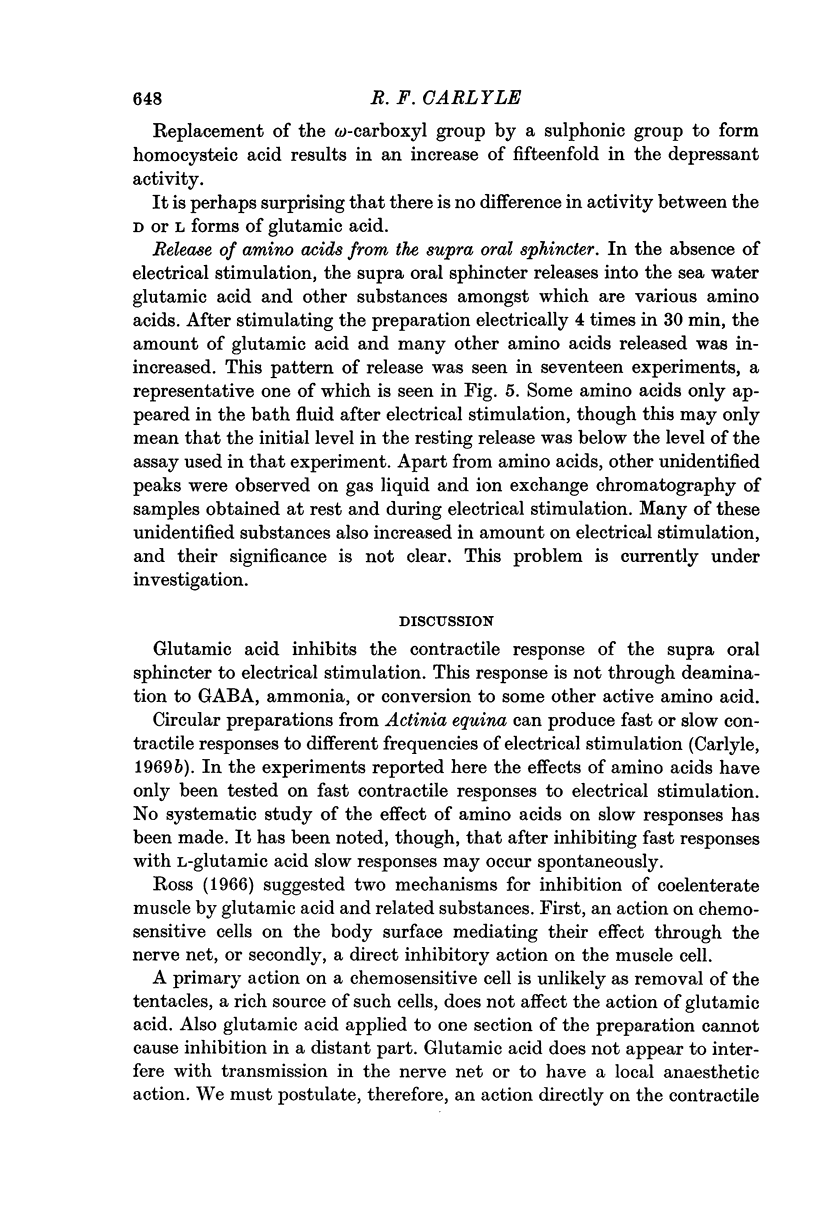
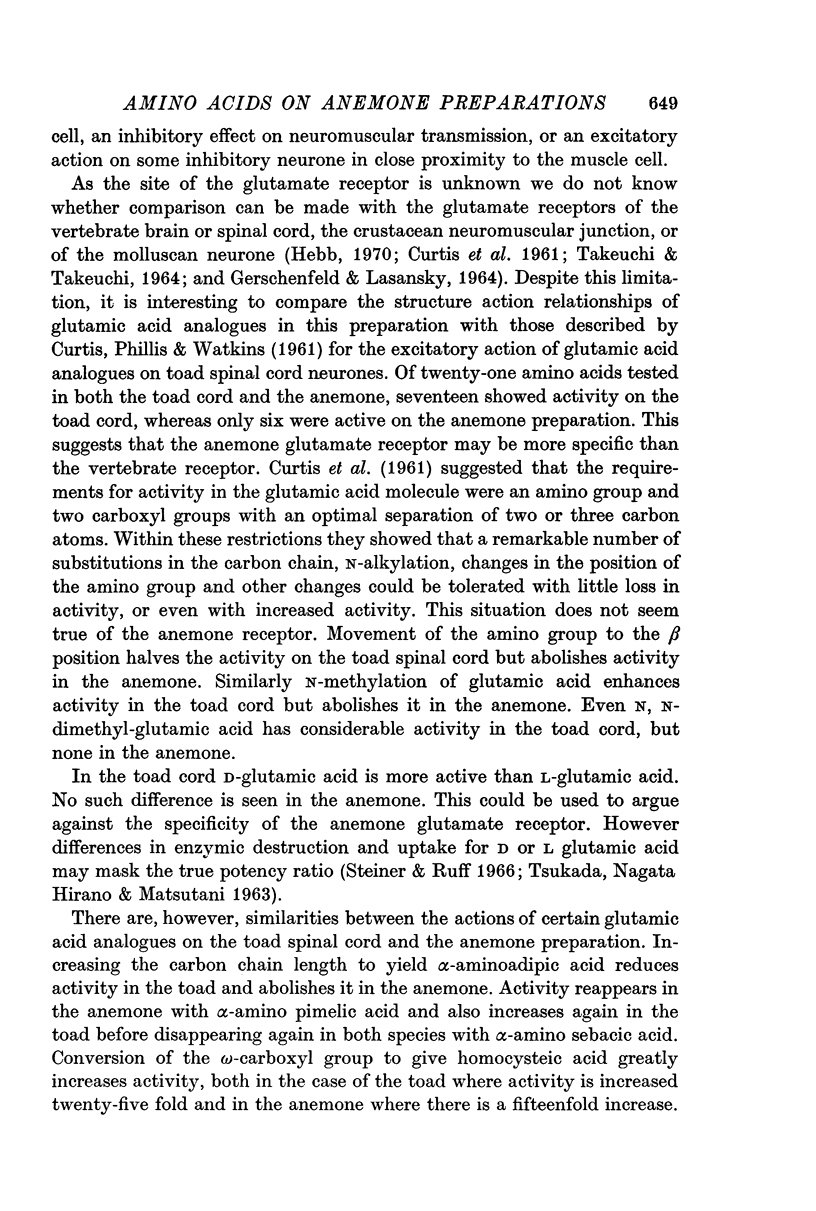
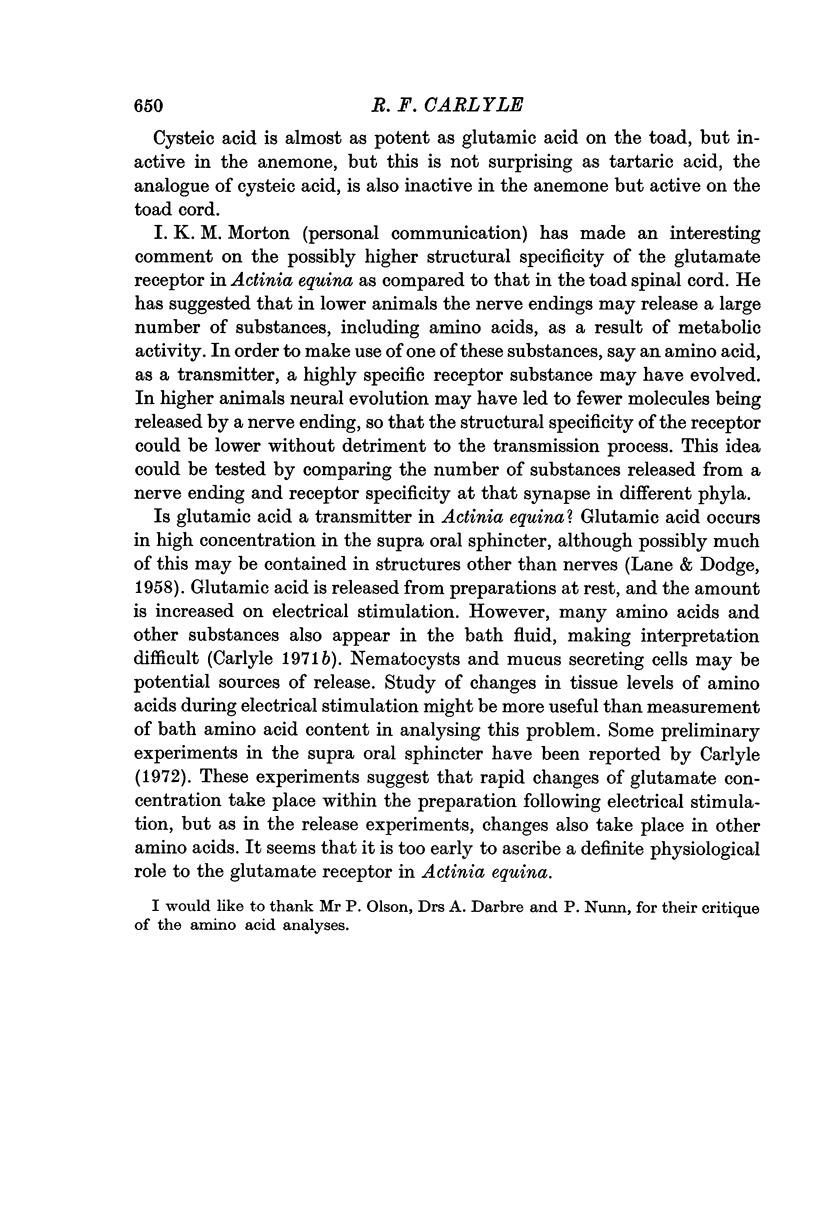
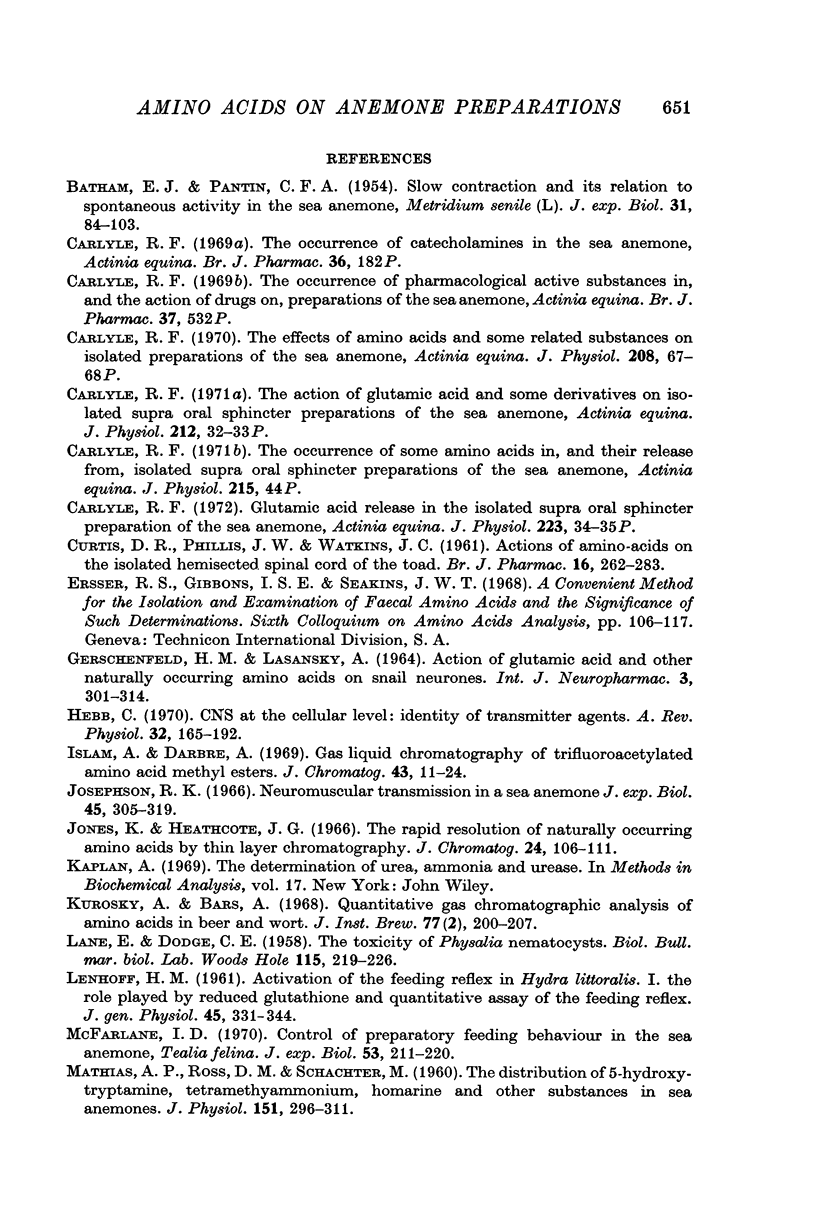
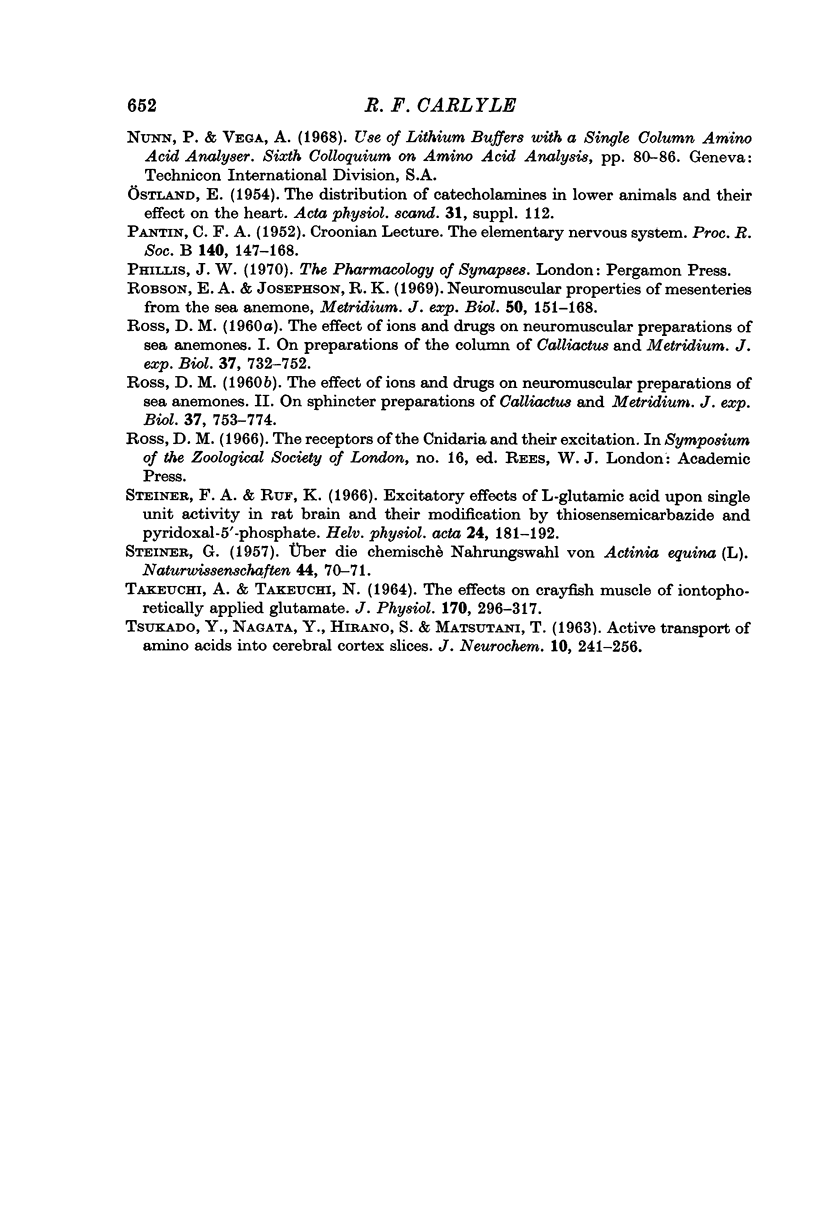
Selected References
These references are in PubMed. This may not be the complete list of references from this article.
- Carlyle R. F. Glutamic acid release in the isolated supra oral sphincter preparation of the sea anemone Actinia equina. J Physiol. 1972 May;223(1):34P–35P. [PubMed] [Google Scholar]
- Carlyle R. F. The effects of amino acids and some related substances on isolated preparations of the sea anemone Actinia equina. J Physiol. 1970 Jun;208(2):67P–68P. [PubMed] [Google Scholar]
- Carlyle R. F. The occurrence of pharmacologically active substances in, and the action of drugs on, preparations of the sea anemone Actinia equina. Br J Pharmacol. 1969 Oct;37(2):532P–533P. [PMC free article] [PubMed] [Google Scholar]
- GERSCHENFELD H. M., LASANSKY A. ACTION OF GLUTAMIC ACID AND OTHER NATURALLY OCCURRING AMINO-ACIDS ON SNAIL CENTRAL NEURONS. Int J Neuropharmacol. 1964 Jul;3:301–314. doi: 10.1016/0028-3908(64)90022-x. [DOI] [PubMed] [Google Scholar]
- Hebb C. CNS at the cellular level: identity of transmitter agents. Annu Rev Physiol. 1970;32:165–192. doi: 10.1146/annurev.ph.32.030170.001121. [DOI] [PubMed] [Google Scholar]
- Jones K., Heathcote J. G. The rapid resolution of naturally occurring amino acids by thin-layer chromatography. J Chromatogr. 1966 Sep;24(1):106–111. doi: 10.1016/s0021-9673(01)98107-5. [DOI] [PubMed] [Google Scholar]
- LENHOFF H. M. Activation of the feeding reflex in Hydra littoralis. I. Role played by reduced glutathione and quantitative assay of the feeding reflex. J Gen Physiol. 1961 Nov;45:331–344. doi: 10.1085/jgp.45.2.331. [DOI] [PMC free article] [PubMed] [Google Scholar]
- MATHIAS A. P., ROSS D. M., SCHACHTER M. The distribution 5-hydroxytryptamine, tetramethyammonium, homarine, and other substances in sea anemones. J Physiol. 1960 May;151:296–311. doi: 10.1113/jphysiol.1960.sp006439. [DOI] [PMC free article] [PubMed] [Google Scholar]
- PANTIN C. F. A. The elementary nervous system. Proc R Soc Lond B Biol Sci. 1952 Oct 16;140(899):147–168. doi: 10.1098/rspb.1952.0052. [DOI] [PubMed] [Google Scholar]
- Robson E. A., Josephson R. K. Neuromuscular properties of mesenteries from the sea-anemone metridium. J Exp Biol. 1969 Feb;50(1):151–168. doi: 10.1242/jeb.50.1.151. [DOI] [PubMed] [Google Scholar]
- Steiner F. A., Ruf K. Excitatory effects of L-glutamic acid upon single unit activity in rat brain and their modification by thiosemicarbazide and pyridoxal-5'-phosphate. Helv Physiol Pharmacol Acta. 1966;24(3):181–192. [PubMed] [Google Scholar]
- TAKEUCHI A., TAKEUCHI N. THE EFFECT ON CRAYFISH MUSCLE OF IONTOPHORETICALLY APPLIED GLUTAMATE. J Physiol. 1964 Mar;170:296–317. doi: 10.1113/jphysiol.1964.sp007332. [DOI] [PMC free article] [PubMed] [Google Scholar]
- TSUKADA Y., NAGATA Y., HIRANO S., MATSUTANI T. Active transport of amino acid into cerebral cortex slices. J Neurochem. 1963 Apr;10:241–256. doi: 10.1111/j.1471-4159.1963.tb05040.x. [DOI] [PubMed] [Google Scholar]


